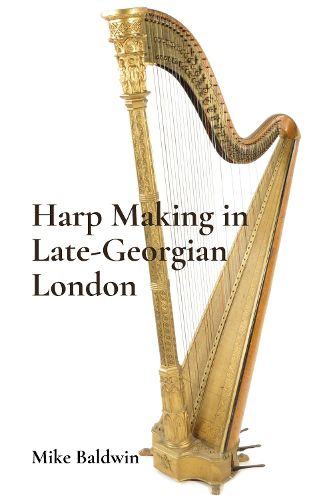Readings Newsletter
Become a Readings Member to make your shopping experience even easier.
Sign in or sign up for free!
You’re not far away from qualifying for FREE standard shipping within Australia
You’ve qualified for FREE standard shipping within Australia
The cart is loading…






This title is printed to order. This book may have been self-published. If so, we cannot guarantee the quality of the content. In the main most books will have gone through the editing process however some may not. We therefore suggest that you be aware of this before ordering this book. If in doubt check either the author or publisher’s details as we are unable to accept any returns unless they are faulty. Please contact us if you have any questions.
At the end of the eighteenth century, after the French Revolution, the centre of pedal-harp making moved from Paris to London. There, building on the work of its Bavarian originators and Parisian developers, mainly immigrant makers elevated the instrument to new musical, technical, and decorative heights, and placed it in the hands and salons of the British upper classes and aristocracy. Until recently, the story of harp making in England has been dominated by the Erard family who built about 7,000 of an estimated 22,000 harps made in London during the nineteenth century; some 20 other makers have been all but forgotten. This book, the story of harp making in late-Georgian England, assesses the role and consumption of the harp in society whilst describing its decorative and technical development. Forgotten makers and their innovations are identified. Through the lens of newly discovered documents and the reinterpretation of others, Jacob Erat’s manufactories are reconstructed. His working methods, illustrative of those used in the wider industry, are rediscovered, and employees and suppliers are revealed anew.
$9.00 standard shipping within Australia
FREE standard shipping within Australia for orders over $100.00
Express & International shipping calculated at checkout
This title is printed to order. This book may have been self-published. If so, we cannot guarantee the quality of the content. In the main most books will have gone through the editing process however some may not. We therefore suggest that you be aware of this before ordering this book. If in doubt check either the author or publisher’s details as we are unable to accept any returns unless they are faulty. Please contact us if you have any questions.
At the end of the eighteenth century, after the French Revolution, the centre of pedal-harp making moved from Paris to London. There, building on the work of its Bavarian originators and Parisian developers, mainly immigrant makers elevated the instrument to new musical, technical, and decorative heights, and placed it in the hands and salons of the British upper classes and aristocracy. Until recently, the story of harp making in England has been dominated by the Erard family who built about 7,000 of an estimated 22,000 harps made in London during the nineteenth century; some 20 other makers have been all but forgotten. This book, the story of harp making in late-Georgian England, assesses the role and consumption of the harp in society whilst describing its decorative and technical development. Forgotten makers and their innovations are identified. Through the lens of newly discovered documents and the reinterpretation of others, Jacob Erat’s manufactories are reconstructed. His working methods, illustrative of those used in the wider industry, are rediscovered, and employees and suppliers are revealed anew.